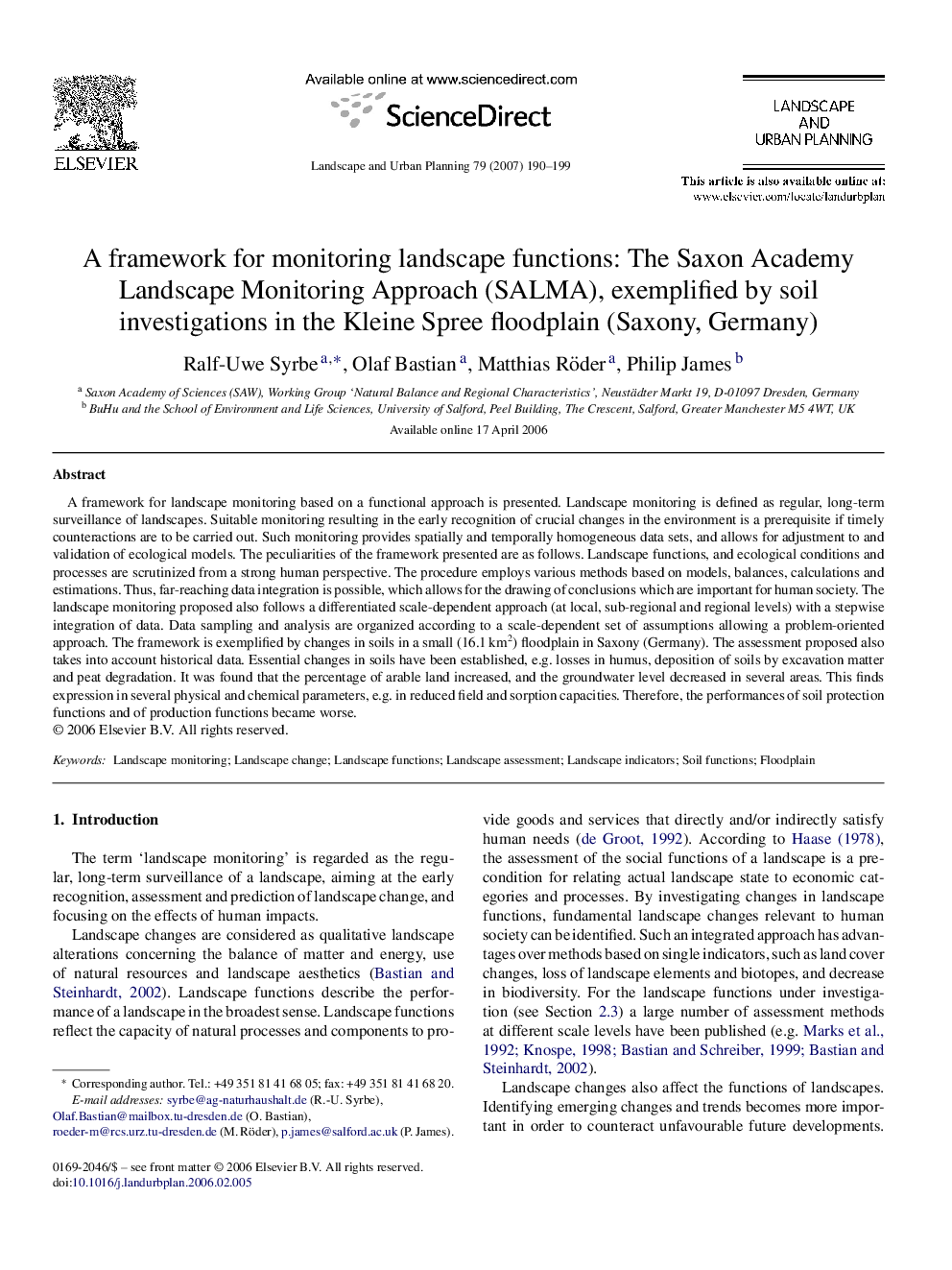| Article ID | Journal | Published Year | Pages | File Type |
|---|---|---|---|---|
| 1050678 | Landscape and Urban Planning | 2007 | 10 Pages |
A framework for landscape monitoring based on a functional approach is presented. Landscape monitoring is defined as regular, long-term surveillance of landscapes. Suitable monitoring resulting in the early recognition of crucial changes in the environment is a prerequisite if timely counteractions are to be carried out. Such monitoring provides spatially and temporally homogeneous data sets, and allows for adjustment to and validation of ecological models. The peculiarities of the framework presented are as follows. Landscape functions, and ecological conditions and processes are scrutinized from a strong human perspective. The procedure employs various methods based on models, balances, calculations and estimations. Thus, far-reaching data integration is possible, which allows for the drawing of conclusions which are important for human society. The landscape monitoring proposed also follows a differentiated scale-dependent approach (at local, sub-regional and regional levels) with a stepwise integration of data. Data sampling and analysis are organized according to a scale-dependent set of assumptions allowing a problem-oriented approach. The framework is exemplified by changes in soils in a small (16.1 km2) floodplain in Saxony (Germany). The assessment proposed also takes into account historical data. Essential changes in soils have been established, e.g. losses in humus, deposition of soils by excavation matter and peat degradation. It was found that the percentage of arable land increased, and the groundwater level decreased in several areas. This finds expression in several physical and chemical parameters, e.g. in reduced field and sorption capacities. Therefore, the performances of soil protection functions and of production functions became worse.
